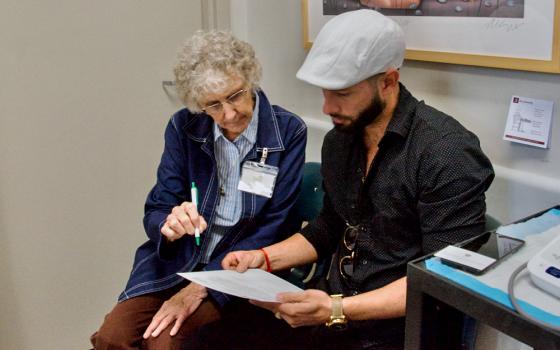Maybe I missed the memo, but what kind of logic makes abortion part of humanitarian aid packages? A recent New York Times' editorial "Humanitarian Aid for Rape Victims" argues that U.S. foreign aid should pay for abortions.
And I thought that was called genocide.
On Sept. 8 -- the Nativity of Mary of all days -- the Times editorialized that forbidding abortion funding in U.S. humanitarian aid packages is "not mandated by any law" but, rather "is an overly restrictive interpretation of the Helms amendment."
The editorial says the federal government is only forbidden from providing abortion as a method of family planning and from motivating or coercing anyone to have an abortion.
Isn't providing funding "motivating"? The paper calls abortion "a proper medical treatment."
Where did this come from? Whose idea is it for the United States to get into the foreign abortion business?
We know the Times is not crazy about Catholicism. While the newspaper has done a service by lifting up the Catholic carpet, exposing lots of creepy crawly things to the light, it doesn't cotton to Catholic moral teaching.
But abortion is not solely a Catholic issue, and the federal government is legally forbidden from spending federal funds on abortions. Why is the Times looking for a loophole?
Well, the Times seems to have gotten the idea from a pressure group called the Global Justice Center, and the country of Norway. The Global Justice Center is a New York-based organization that works to influence international policies.
OK, but why is Norway involved in what the United States does with my taxes?
That aside -- I somehow thought it wasn't quite proper for foreign governments to enter into internal U.S. policy discussions -- I think it is time to take a look at where the "newspaper of record" is getting its information of record.
The Global Justice Center says it has consultative status with the United Nations Economic and Social Council as a human rights legal organization. Like 3,500 other non-governmental organizations, it lobbies U.N. committees and countries to push its agenda.
Apparently Norway signed on with some non-profits in an attempt to corner the U.S. into adding abortion to humanitarian aid packages, saying the Geneva Conventions entitle all war victims to medical treatment. And the Global Justice Center managed to get an editorial supporting its abortion-is-Geneva-Convention-medical-treatment idea into the editorial pages of The New York Times.
That is very high-power (and very expensive) public relations.
And the Global Justice Center isn't the only crowd pouring "facts" into the Times' willing ear. A more recent Times editorial page reproduces a country-graph of "the most harmful restrictions" provided by the Guttmacher Institute, a non-profit spawned from Planned Parenthood and named for its former president.
Bottom line: The New York Times has swallowed whole the Planned Parenthood mantra: "abortion is one of the safest and most common of medical procedures" and "anti-abortion forces ... portray abortion as outside the mainstream and cast women who have abortions as immoral outliers."
Well, I don't think so.
I've never thought those "anti-abortion forces" so darkly on the Times' radar call women who have aborted "immoral outliers." Maybe some do, but I think the rational response is to help women avoid abortion where possible, or help them heal from the tragedy that has befallen them. That is what church efforts are about. And that is what humanitarian aid is about.
I know rape is a tool of war. I know that Somali refugee women are raped on their way to, and even inside, Kenya. I know about the idiocy of military forces in Congo, Sudan and Burma. But I do not think the answer is for a foreign government -- the United States or anyone else -- to provide abortions.
Women's health is a complex global issue, no doubt about it, and the United States should assist wherever it can. But abortion is not just another medical procedure. Even the poorest of women -- in Somalia, in Kenya, in Congo, in Sudan, and in Burma -- know intuitively that it is a dreadful end to a separate human life.
Unfortunately, precisely because they are so poor and disenfranchised, those same women cannot get that idea into The New York Times.
[Phyllis Zagano is senior research associate-in-residence at Hofstra University and author of several books in Catholic studies. Her most recent books are Women & Catholicism, published by Palgrave-Macmillan in June, and Women Deacons: Past, Present, Future (with Gary Macy and William T. Ditewig) newly released by Paulist Press.]
Editor's Note: We can send you an e-mail alert every time Phyllis Zagano's column, "Just Catholic," is posted to NCRonline.org. Go to this page and follow directions: E-mail alert sign-up. If you already receive e-mail alerts from us, click on the "update my profile" button to add "Phyllis Zagano" to your list.



